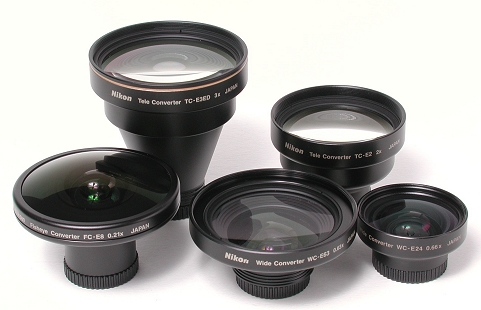
|
| All five Nikon lens converters |
Nikon manufactures five lens converters for modifying the on-camera focal length. The following image shows all five Nikon lens converters. On the first row, from left to right, are the 0.21x Fisheye Converter FC-E8, 0.63x Wide Angle Converter WC-E63 and 0.66x Wide Angle Converter WC-E24. On the second row, from left to right, are the 3x Tele Converter TC-E3ED and 2x Tele Converter TC-E2.

|
| All five Nikon lens converters |
All of these lens converters screw on the on-camera lens and change the combined focal lengths. Each lens has a "multiplier" (i.e., 0.21x, 0.63x, 0.66x, 2x and 3x). When a lens is used with the on-camera lens, the combined focal length is the product of the given multiplier and the focal length of the on-camera lens. Recall that the on-camera lens has focal length in the range of 38mm and 115mm (35mm equivalent). If the wide angle converter WC-E63 is used, the combined focal length is in the range of 24mm (=38mm×0.63) and 72mm (=115mm×0.63). The following table gives the range of the combined focal length of each converter. Note that vignetting will occur in the lower end of the focal length range when TC-E2 or TC-E3ED is used.
| Converter | Multiplier | Combined Focal Length |
| On-Camera Lens | 1x | 38mm - 115mm |
| Fisheye FC-E8 | 0.21x | 8mm - 24mm |
| Wide Angle WC-63 | 0.63x | 24mm - 72mm |
| Wide Angle WC-E24 | 0.66x | 24mm - 72mm |
| Tele TC-E2 | 2x | 76mm - 230mm |
| Tele TC-E3ED | 3x | 114mm - 345mm |
Please keep in mind that these lens converters are of type afocal. Parallel lights entering an afocal lens are also parallel when they exit. Thus, an afocal lens does not have focal length, or, its focal point is at infinity. As a result, afocal lens are only used to modify focal lengths and other optical characteristics and must be used with other prime lenses. This means afocal lens are not supposed to be used alone.
Because lens converters are attached on the on-camera lens creating combined lenses of modified focal lengths, these combined lenses share or sometime magnify the problems of the on-camera lens. These include lens flare, ghost image, field curvature, aberration and so on. Please refer to On-Camera Lens Overview for the details.
As mentioned in previous section, the five lens converters and the on-camera lens cover focal lengths from 8mm to 345mm (35mm equivalent). The following figure shows the focal length range and the corresponding lens converter. In general, if a focal length can be obtained with the on-camera lens, use the on-camera lens rather than a lens converter. For example, the focal lengths range of WC-E24 and WC-E63 overlap with that of the on-camera lens (i.e., 38mm to 72mm). If the desired focal length is in this range, the on-camera lens should be used for better image quality even though WC-E24 and WC-E63 can also do the job. More precisely, use a lens converter only if the on-camera lens cannot reach the desired focal length.

Let us see some actual images to learn the effect of these focal lengths. All of these images were taken at the same position with different focal lengths. We start with the widest possible focal length: the fisheye converter. The fisheye converter, at its shortest focal length (or widest angle of view), produces a circular image and covers more than 180 degree in all directions. However, fisheye converters is not rectilinear, which means straight lines will be rendered into curves. Zooming in the on-camera lens until vignetting disappears, we have a full frame fisheye image that covers more than 100 degree horizontally. The corresponding focal length is 14mm. If linear distortion is acceptable, this fisheye converter can be used as an ultra-wide lens!
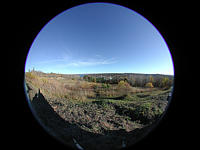
|
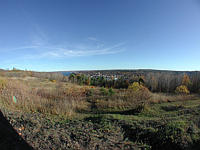
|
| Fisheye 8mm | Fisheye 14mm |
| Click on the image to see a larger one | |
The next range is 24mm to 38mm covered by WC-E24 or WC-E63. The most popular focal lengths in this range are 24mm, 28mm and 35mm. Since it is in general indistinguishable between 35mm and 38mm for most cases, we shall ignore 35mm and use 38mm as a substitute. The following images show the results of 24mm and 28mm using WC-E63.
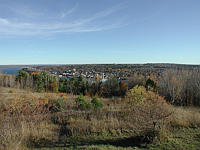
|
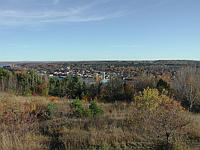
|
| 24mm | 28mm |
| Click on the image to see a larger one | |
The next three images are taken with the on-camera lens. The focal lengths used are 38mm, 50mm (normal or standard) and 75mm. Starting with 75mm it is in the moderate telephoto range.
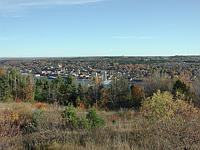
|

|
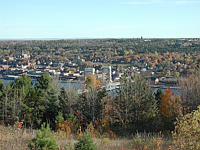
|
| 38mm | 50mm | 75mm |
| Click on the image to see a larger one | ||
The longest focal length of the on-camera lens is 115mm. Beyond this range, either TC-E2 or TC-E3ED must be used. The following images show the effect of 230mm and 340mm. There were taken using TC-E2 and TC-E3ED.
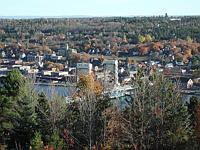
|
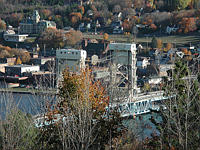
|
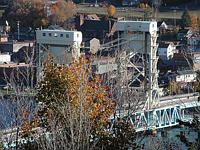
|
| 115mm | 230mm | 345mm |
| Click on the image to see a larger one | ||
The first and most serious restriction is that a mounted converter can block the flash sensor and sometimes the internal flash as well. Thus, the internal flash may not be used. Because the flash sensor is also blocked, external flashes may not be used either. The following image shows the flash sensor and the internal flash. The front-end of the viewfinder is the the small rectangle between the lens and the internal flash.
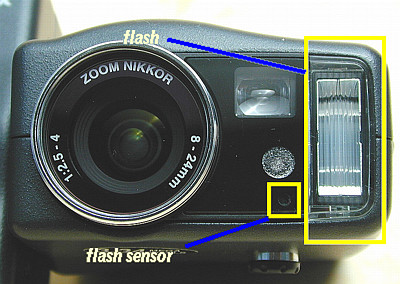
The following images illustrate this situation. All converters except for the WC-E24 blocks both flash and flash sensor. WC-E24 does not block the flash, but it does block the flash sensor.

|
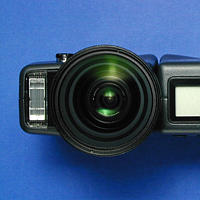
|
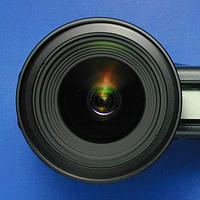
|
| FC-E8 Fisheye | WC-E24 Wide Angle | WC-E63 Wide Angle |
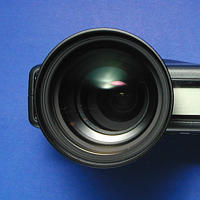
|
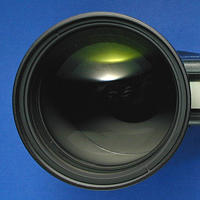
|
| TC-E2 Tele | TC-E3ED Tele |
The above images also show another serious problem: viewfinder is blocked by every converter, which means you cannot use viewfinder for composition. Use LCD monitor instead.
Another issue we should address here is the use of filters. The following table lists the thread size of each converter.
| Converter | Filter Thread Size |
| FC-E8 | not available |
| WC-E24 | 48mm (see note 1 below) |
| WC-E63 | 72mm (see note 2 below) |
| TC-E2 | 62mm |
| TC-E3ED | 72mm |
Here are two important notes:
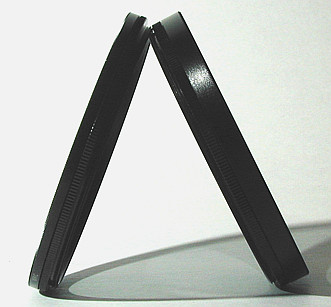
|
| Slim wide-angle (left) and conventional polarizers (right) |